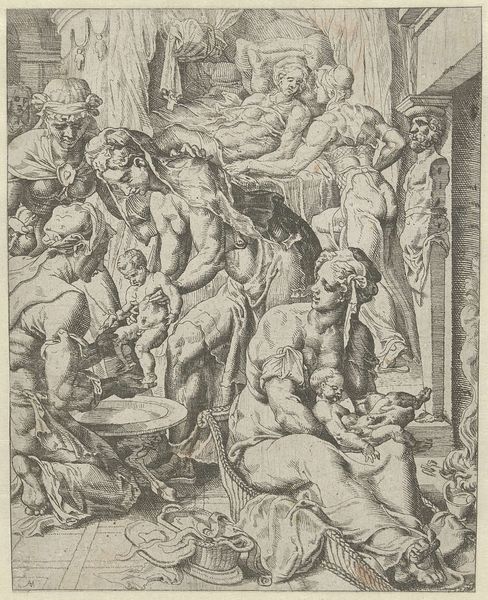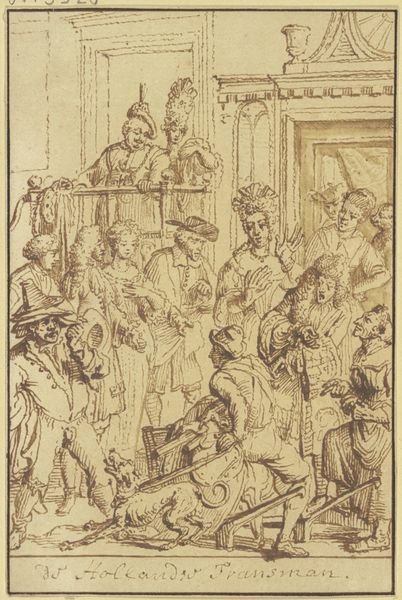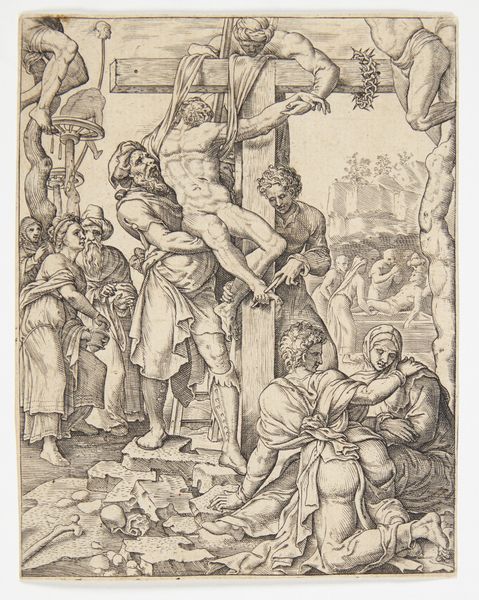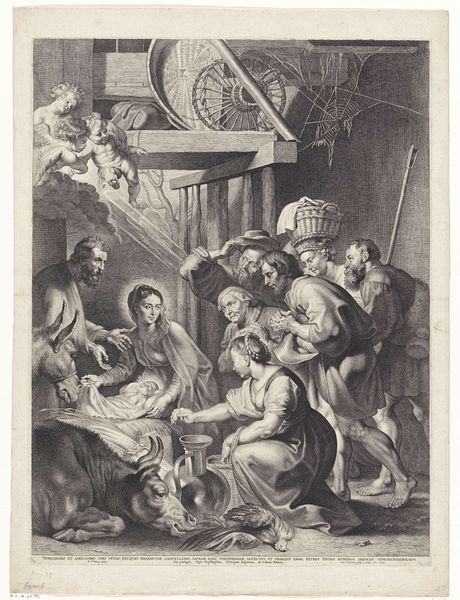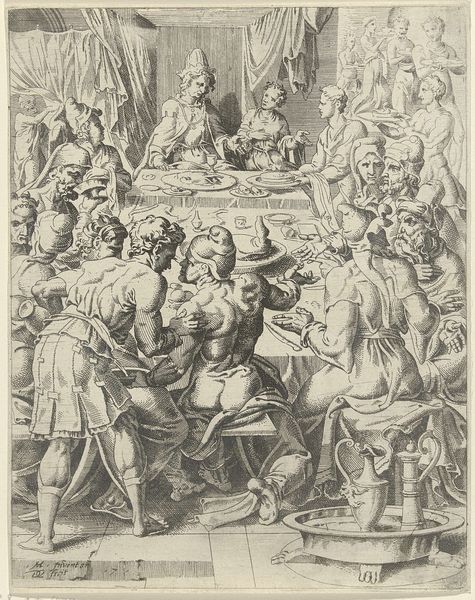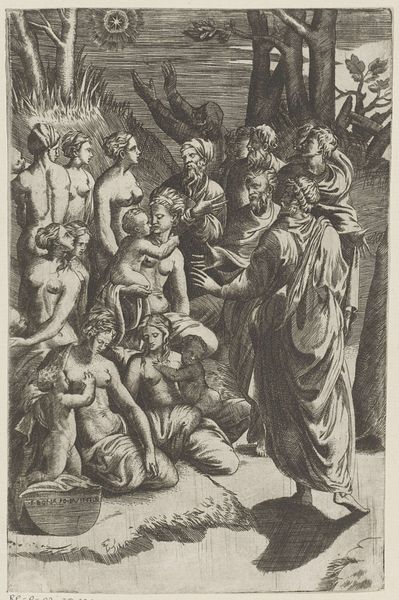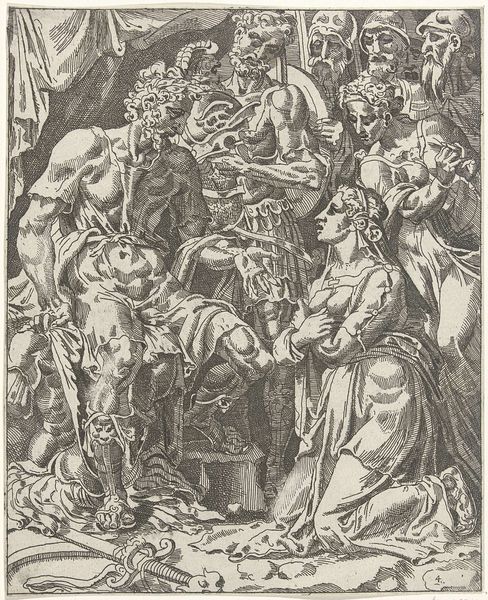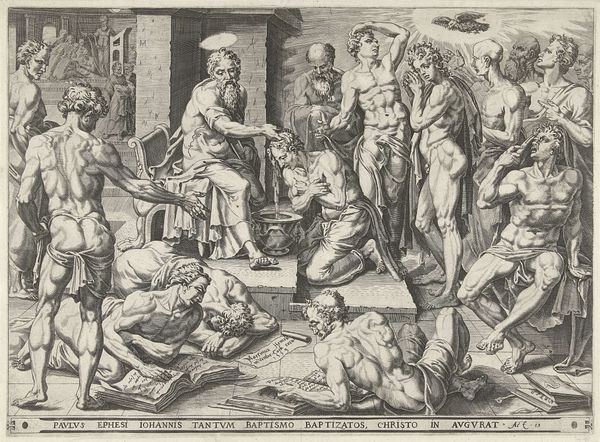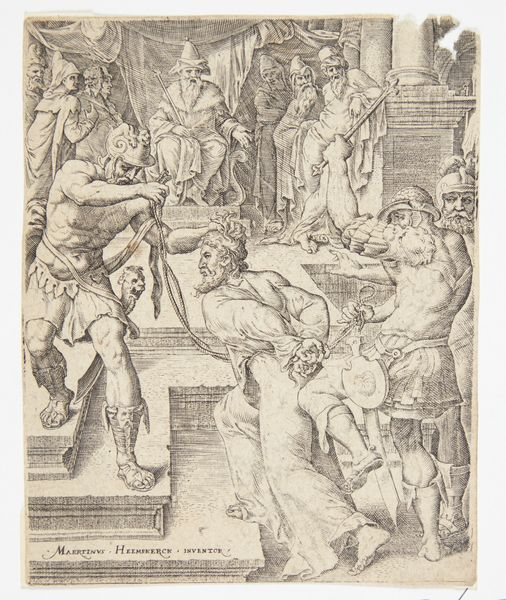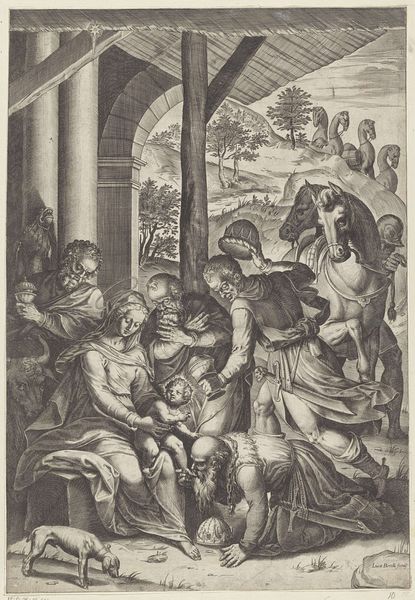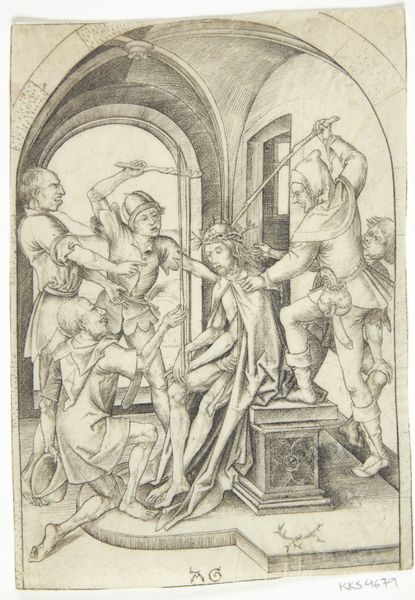
print, engraving
#
ink drawing
#
pen drawing
# print
#
mannerism
#
figuration
#
group-portraits
#
pen work
#
history-painting
#
italian-renaissance
#
engraving
Dimensions: height 539 mm, width 401 mm
Copyright: Rijks Museum: Open Domain
Editor: Here we have "Bewening," an engraving made by Enea Vico sometime between 1533 and 1567, now at the Rijksmuseum. It's... dense. So much is going on. What initially strikes me is how theatrical and sorrowful everyone looks. How do you interpret this work? Curator: It's interesting you pick up on the theatricality; I feel it too. It’s like a stage filled with grief-stricken players. But look closer: Vico has also snuck in ancient gods and heroes observing the scene. It's a powerful reminder that even in sacred moments, echoes of the past, and the weight of history are present. Notice the cross in the upper-right corner, what looks like Hercules. The engraver places antiquity, its Gods and heroes, and Catholic History side by side, asking the viewers: Is this mourning or historical memory? Editor: The figures observing from above seem…detached. Like they're watching a play, almost. What effect does that have, do you think? Curator: I imagine they’re reflecting on their own powerlessness in the face of mortality. We’re all, in a sense, observers of our own lives, right? Think about it: an image about loss printed with the incisive technique of an engraving for future eyes. Perhaps the figures echo that tension between the physical, momentary event, and its potential for immortality. The composition reminds us of the Renaissance fascination with perspective, as an allegory to mankind’s fate: at the foot of the cross as passive witnesses in life’s greatest tragedy. What did you notice about the scale? Editor: It's impressive, the way he uses these layers of imagery and how full the print feels. I had a hard time pinpointing any sense of perspective but it made the scene even more emotive and crammed! Curator: It’s like an exercise in perspective – or maybe an undermining of it. Vico uses light and shadow so cleverly; it creates the illusion of depth. The whole artwork is rich and intricate in details that keeps it very emotive as you mentioned before. The characters that attend Jesus show suffering on different levels. Each figure embodies sorrow through unique angles. What do you take away after a second look? Editor: I'm now considering all these perspectives—religious, mythical, historical. I appreciate how you see the piece as commenting on our roles as spectators, and about this memory, like a "historical mourning" scene.
Comments
No comments
Be the first to comment and join the conversation on the ultimate creative platform.
